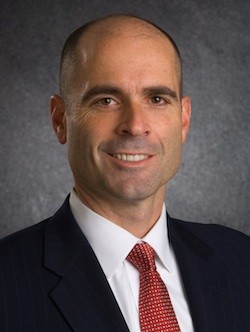A paradox of U.S. electronic equity markets is that as they have become more efficient in terms of price discovery and trade matching, they have also become more complex and harder to navigate due to factors such as market fragmentation and an expanding universe of order types.
For a trading desk, one way to gain an edge is to in effect plant a brain into the engine of the desk, the execution management system. By embedding logic directly into the EMS, practitioners of this cutting-edge methodology say predictive modeling allows for best execution through optimized algorithm selection and management, creating a ‘smart’ EMS.
“On a practical basis, it makes a lot of sense. It’s something I’d love to see,” said Joseph Scafidi, director of trading at San Diego-based Brandes Investment Partners, which manages $27 billion of mostly value stocks. “I eventually think it will be there. The market has always had TCA. That might help you tweak strategies down the road. What you’d prefer to have is dynamic or live-time feedback.”

Joe Scafidi, Brandes Investment Partners
Central to the idea of a smart EMS is the ability to learn based on previous activity, and to have a benchmark.
“The term ‘smart’ is really a relative term,” said Benjamin Van Vliet, assistant professor of finance at the Illinois Institute of Technology Stuart School of Business. “An EMS may be smarter than the competition or smarter than it used to be, but what was a smart algorithm yesterday may not be a smart algorithm today. Smart algorithms either adjust or learn to adjust themselves relative to activity in the market.”
Van Vliet continued, “While all automated trading systems involve an execution algorithm, typically what you’re talking about with smart EMSs is optimal execution of a large customer order, as opposed to ‘black-box’ systems that generate profits for the firm.”
The notion of an intelligent or smart EMS is not that much different from human intelligence, in that it makes determinations based on what it perceives in the environment, and acts accordingly.
“We make decisions based on predictions about what will be the consequences of our actions,” said Henri Waelbroeck, global head of research at technology provider Portware, which provides trading systems that bake intelligence into their processes. “This affects every aspect of our lives: how we drive, where we place our hand to catch a ball, even social interactions. We look at data not for what it is, but for what it says about the near-term future.”
“A smart EMS works the same way,” Waelbroeck continued. “Every decision made to place a ‘child’ order, or to choose an algorithm, will be based on a prediction of what we think the outcome of the decision is likely to be. When that happens, we will truly have a transition from the workflow solution EMS of today to the intelligent EMS of tomorrow.”
Given the amount of investment-management brainpower expended on how to outperform a benchmark, a smart EMS could allow human traders to add their intuitive skills to the precision of the machine.
“This topic has been the subject of significant industry and academic research as people have tried to ‘algorithmize’ such strategies,” said Van Vliet. “People have spent a lot of time and effort trying to figure out how to execute large orders over a time period at a price that is better than some benchmark, typically the VWAP (volume-weighted average price). “
The idea was to look at the evolution of market prices and volumes to execute a large order so that the arrival price is better than the VWAP price over the same time frame, he noted. “Of course, this is not easily done. We can’t all be above average. If you have an algorithm that beats the VWAP, the competition will eventually find the same strategy, to the point where it no longer performs above average,” Van Vliet said.
The presence of high-frequency traders can skew the factors used to determine an execution strategy, something that a smart EMS could pick up on and adjust to.
“The volume of high-frequency traders may represent a large portion of the VWAP,” Van Vliet said. “Nevertheless, executing a large order at a price above the VWAP in a market with high-frequency traders may result in a better absolute price than executing that order at a price below the VWAP in a market without high-frequency traders.”
Van Vliet continued, “Likewise, if someone is executing a large order using an algorithm that’s too simple, another trader may figure out what the algorithm is doing and trade ahead of it.”
According to Waelbroeck, Portware’s Alpha Vision algo-optimization offering is the first smart EMS in that its decisions, both in terms of how to assign an execution strategy to an order and how to implement that strategy via algorithms, are guided by predictive models.
“The design of a smart EMS requires thinking of things in a very different way. Instead ofsimply making available the core functions required to implement decisions, a smart EMS needs to provide the predictive tools required to make optimal decisions at every step of the execution-management hierarchy,” Waelbroeck said. “The next logical step is to take those predictive models and make them available to serve any function that a user may require to better analyze and execute investment ideas.”

